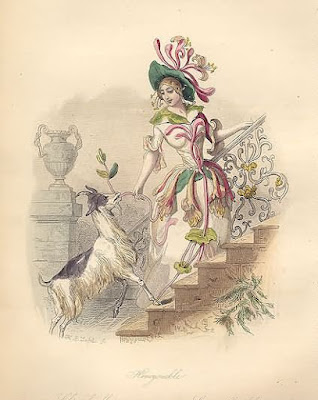I worked on softening the girl's skin by dabbing white, sometimes mixed with a bit of yellow or pink, over her entire body. This gave it a nicer effect and took away the harsh undertone. I did the same on the little guy. I am also adding darker paint to the shadow areas all around to make things pop out more, re-drawing when I think something is not quite right. I painted some details on the ukulele. Everything will get stronger and more intense as I keep adding paint. Highlights and shadows. Details. If I overwork something, I wipe it off and restore it to the way it was and try again. I use odorless turpenoid as a thinner mainly to clean my brushes with or to wipe things off. I rarely ever use thinner to thin the paint. After I'm done painting for the day, I clean my brushes with thinner and then soap and water. Then, I dip the sables in olive oil to make them last longer.
This is a small painting, almost a miniature. I have been working on a large canvas at the same time and, I have to say, sometimes it's way easier to work larger. Working small can get anal.
I think this will be my last post before I show you the final. Scanning the steps and showing you how it's done is limited because I have to wait for things to dry. Sometimes working on an oil painting is all about leaving certain things wet for a while. The beauty of oil paint is that I can blend things while the paint is still wet. I still have a few more days of work on "Honeybee".











